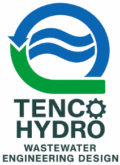Essential Maintenance Tips for Coalescing Oil Water Separators: Ensuring Efficient Oil Removal
Coalescing oil water separators are essential for separating oil and other hydrocarbons from water, commonly used in industrial facilities, automotive shops, and wastewater treatment plants. To maintain peak performance and ensure compliance with environmental regulations, regular maintenance is critical. In this blog post, we’ll cover the key components of coalescing oil water separators that require maintenance and offer tips to help keep your system running efficiently.
1. Coalescing Media Maintenance
The coalescing media is the core component responsible for combining small oil droplets into larger ones, allowing them to rise to the surface for removal.
- Regular Cleaning: Over time, oil, grease, and solid particulates can clog the coalescing media, reducing its efficiency. Regular cleaning or replacement of the coalescing plates or mesh is essential to maintain optimal performance.
- Inspection for Damage: Coalescing media can degrade over time due to wear or exposure to harsh chemicals. Regularly inspect the media for cracks or excessive buildup, and replace damaged sections to avoid system inefficiencies.
2. Oil Skimmer and Collection System Maintenance
The oil skimmer plays a vital role in removing separated oil from the water surface. Proper maintenance of this system ensures smooth operation.
- Skimmer Blade Maintenance: Inspect the skimmer blades for wear or misalignment. Worn blades may fail to remove oil efficiently, so adjust or replace them as necessary to ensure effective oil removal.
- Oil Collection Tank Cleaning: The oil collection tank stores the separated oil. Sludge and debris can build up in the tank over time, leading to blockages or overflows. Regularly cleaning the tank prevents these issues and ensures smooth oil collection.
- Piping and Valve Inspection: Check the pipes and valves leading to the oil collection tank for blockages, leaks, or wear. Clean or replace them as needed to ensure smooth oil flow and avoid system inefficiencies.
3. Inlet and Outlet Maintenance
The inlet and outlet structures control the flow of water into and out of the separator, and they require regular attention to maintain consistent flow and prevent disruptions.
- Inlet Diffuser Cleaning: The inlet diffuser evenly distributes water across the coalescing media. It can become clogged with solids or debris over time, so regular cleaning is necessary to maintain even water distribution.
- Outlet Weir Inspection: The outlet weir controls the discharge of treated water. If the weir becomes blocked or damaged, it can impact water flow and cause the system to back up. Inspect and clean the outlet regularly to ensure smooth water discharge.
4. Sludge and Sediment Removal
Sediment and sludge can accumulate at the bottom of the coalescing oil water separator, impacting performance if left unchecked.
- Sludge Removal: Over time, suspended solids settle at the bottom of the separator, forming a layer of sludge. If not removed regularly, this sludge can reduce the separator’s capacity and lead to inefficiencies. Schedule regular sludge removal to keep the separator functioning effectively.
- Sediment Trap Cleaning: Many coalescing oil water separators are equipped with sediment traps that capture solid particles before they enter the coalescing media. Cleaning these traps regularly helps prevent clogs and extends the lifespan of the coalescing media.
5. Oil Water Separator Filter Maintenance
Many systems include filters to remove finer particles from the water before it enters the coalescing media. These filters require regular maintenance to ensure optimal performance.
- Filter Cleaning or Replacement: Inspect filters regularly for clogs or damage. A clogged filter can reduce flow rates and decrease the system’s effectiveness. Clean or replace filters according to the manufacturer’s recommendations to maintain proper filtration.
6. Control and Automation System Maintenance
Automated controls are often used to monitor and manage the operation of coalescing oil water separators. Proper maintenance of these systems ensures continuous and efficient operation.
- Sensor Calibration: Sensors monitor oil levels, water flow, and other key parameters. Over time, these sensors may lose accuracy, leading to inefficient operation. Regular calibration of sensors ensures accurate readings and helps maintain system performance.
- Control Panel Inspection: Electrical components and control panels can degrade due to exposure to the elements. Regular inspection of wiring, connectors, and panels prevents potential malfunctions and keeps the separator operating smoothly.
7. General Mechanical Component Maintenance
As with any mechanical system, regular upkeep of the moving parts in a coalescing oil water separator is necessary to prevent breakdowns.
- Pump and Motor Maintenance: If your system includes pumps for transferring oil or water, inspect them regularly for wear, leaks, and proper operation. Lubricate bearings as needed and replace worn seals or gaskets.
- Valves and Actuators: Valves control the flow of oil and water through the system. Regular inspection of valves for leaks, corrosion, or blockages is necessary to ensure they function properly. Actuators should be checked for proper operation and lubricated as required.
Why Regular Coalescing Oil Water Separator Maintenance Is Crucial
Maintaining your coalescing oil water separator is essential for ensuring efficient oil removal and preventing costly downtime. Routine maintenance improves system performance, reduces the risk of breakdowns, and helps you stay compliant with environmental regulations.
By regularly inspecting and servicing critical components such as the coalescing media, oil skimmer, inlet/outlet, and sludge management systems, you can optimize your separator’s efficiency and extend its lifespan.
Final Thoughts on Coalescing Oil Water Separator Maintenance
A well-maintained coalescing oil water separator is key to successful wastewater treatment, especially in industries where oil and hydrocarbons need to be separated from water. By following the maintenance tips outlined above, you can avoid system failures, reduce operational costs, and maintain consistent water quality.
If you need assistance with your system or have any questions, feel free to reach out to an experienced technician for expert advice and support.
Got questions about maintaining your coalescing oil water separator? We’ll be happy to help!
